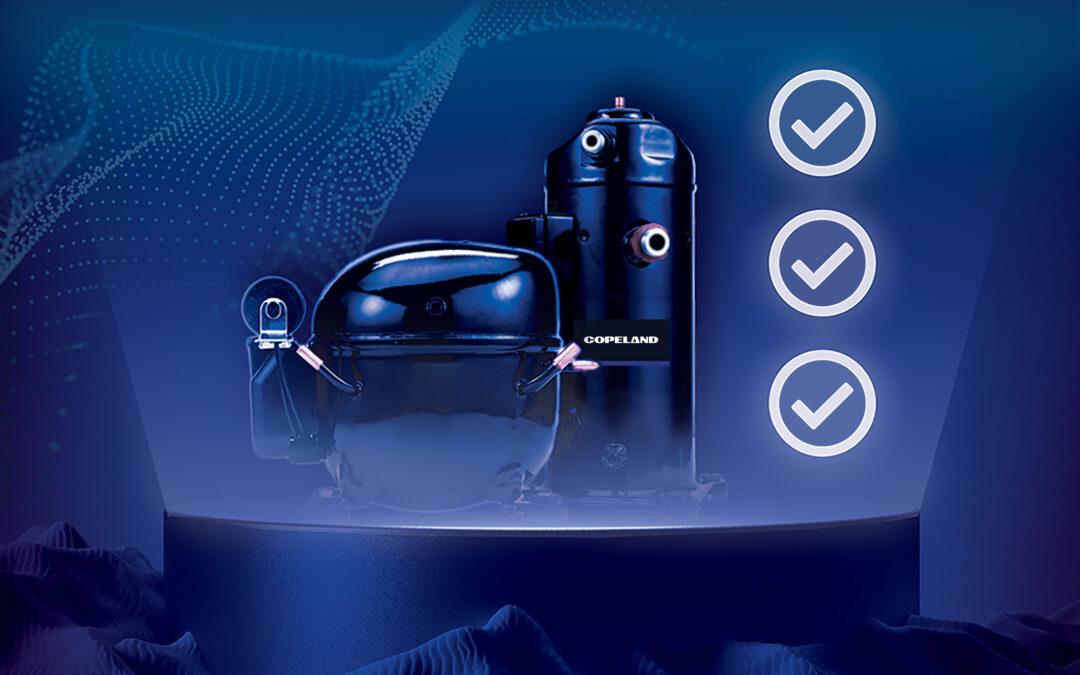*On June 1, 2023 Emerson’s Climate Technologies business became a new standalone company – Copeland. Though our name has changed, we are building on more than a century of HVACR innovation and industry leadership, and Copeland continues to offer the same products, industry stewardship, and learning opportunities you’ve grown to trust. Information found on this webpage posted before June 1, 2023 may contain our old name or branding, but you can be at ease knowing it was created with the knowledge and expertise of Copeland.
ACHR News recently interviewed me for an article titled “Compressor Retrofits on the Rise in Commercial Refrigeration.” It featured a variety of perspectives on the merits of compressor retrofits versus total system replacement. The article can be found here.

When facility energy costs creep up, one of the first suspects is almost always the commercial refrigeration system. It’s a reasonable assumption to make. Over time, it’s very common for energy efficiency to decline as systems drift from their original commissioned performance baselines.
But that doesn’t make a total system replacement inevitable. Many food retailers are reclaiming energy efficiencies by pairing system recommissioning with a measurement and verification (M&V) program and targeted compressor upgrades. In the process, they can reduce energy consumption, improve system performance and reliability and extend the system’s lifespan without the capital investment and business interruption that a full system replacement would require.
Back to the (factory spec) basics
Prolonged use, normal wear and tear and migration from recommended setpoints can degrade efficiency over time. Recommissioning fine-tunes the refrigeration system so that it operates as intended. The process typically involves optimizing every setpoint, cleaning condensers and replacing damaged components. Often, operators can capture significant savings just by recalibrating their system to factory specifications.
Implementing an M&V program ensures those savings are sustainable. Energy-monitoring equipment that delivers real-time insights will help operators ensure their equipment stays in tune. When variances occur, contractors can quickly identify the root cause and address the issue. But just as important, they can use the data generated by the M&V program to make informed decisions on future improvements.
Greater efficiency through variable-capacity modulation
The next step is to enhance energy efficiencies in low- and medium-temperature racks by upgrading to a digital compressor with variable-capacity modulation or by adding a variable frequency drive (VFD). Often, the best candidates for replacement are fixed-capacity compressors that are underperforming or the smallest displacement compressors in each rack.
By adding a variable-capacity digital compressor or VFD to the mix, operators can:
-
- Accurately match capacity to changing refrigeration loads
- Improve case temperature precision
- Reduce compressor cycling
- Maintain tighter control over suction manifold pressures
One often overlooked solution is the option to add a VFD to legacy Copeland™ Discus™ and Copeland™ fixed-capacity scroll compressors. Perhaps a more common solution is replacing one or even two underperforming fixed-capacity compressors with a digital compressor such as a Copeland Discus digital or Copeland digital scroll compressor — both of which enable variable-capacity modulation to deliver significant energy savings.
When a leading supermarket chain tested the strategy on a 20-year-old, 45,000 square foot grocery store in Ontario, it found that:
-
- Recommissioning reduced energy costs by 18%
- Replacing two weaker units with Copeland Discus compressors reduced energy costs by an additional 16% and qualified the retailer for a local energy incentive program
The entire effort delivered an annual energy savings of more than $40,000.
Proven strategies for every situation
As other contributors to the article note, compressor upgrades (or retrofits) may not always be the right solution for every system. Depending on the age and condition of the equipment, a total system replacement may make more financial sense. This strategy would ensure all system controls and components are integrated and optimized for lower-GWP refrigerants.
Ultimately, choosing between a compressor retrofit or full system replacement should be a data-driven decision that operators make in consultation with their contractors. As a leader in commercial refrigeration and other cold chain technologies, Emerson can help operators maximize their return on that decision. We offer a full suite of components that boost energy efficiency and provide internet of things (IoT) capabilities for retrofits and new equipment alike. Our application engineers are available to answer questions related to refrigeration system performance, retrofit opportunities and strategies for maximizing energy efficiency.

Electrical component considerations for A2L system safety
Electrical component considerations for A2L system safety As a new refrigerant category in the...

A2L refrigerant regulation updates: what you need to know today
Preparing for the approval and safe use of A2Ls in commercial refrigeration applications The move...

Address Efficiency Mandates with Compression Technologies
Strategies for complying with DOE and ENERGY STAR® in self-contained and remote condensing units...
